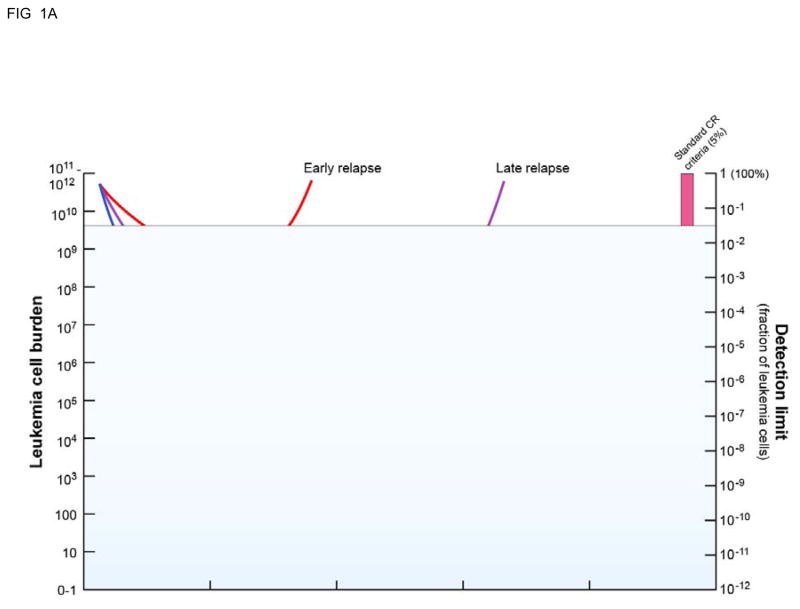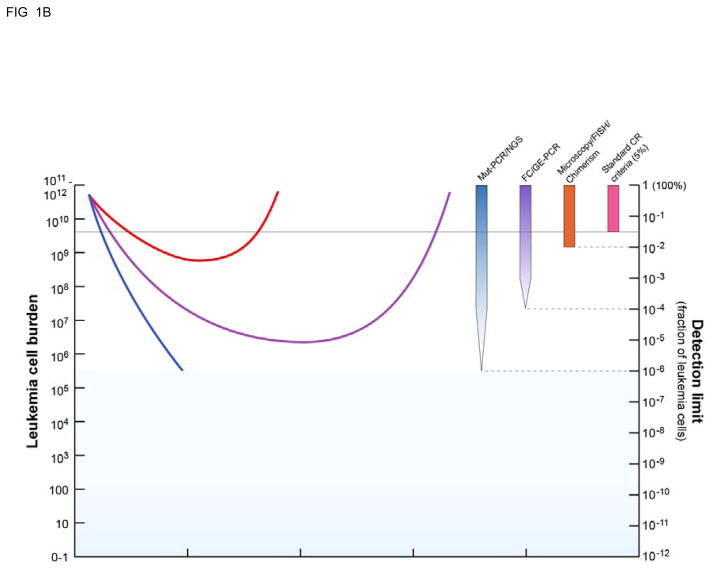Figure 1. High sensitivity measurements of residual disease burden allows for a more complete understanding of AML treatment response and clinical “relapse”.
A: Standard clinical response criteria mean that most (50–75%) of patients treated with chemotherapy achieve an initial “complete remission” but many will subsequently relapse. B: Use of measurable residual disease (MRD) techniques with higher sensitivity than morphological examination (>5% blasts) for example FISH/chimerism (orange bar, ~10−2 sensitivity), flow cytometry or gene expression RQ-PCR (purple bar, ~10−4 sensitivity) or PCR for re-arranged or mutated sequence/next generation sequencing (blue bar, ~10−6 sensitivity) allows for better understanding of response to treatment and greater ability to predict subsequent clinical relapse. Adapted from [6].


